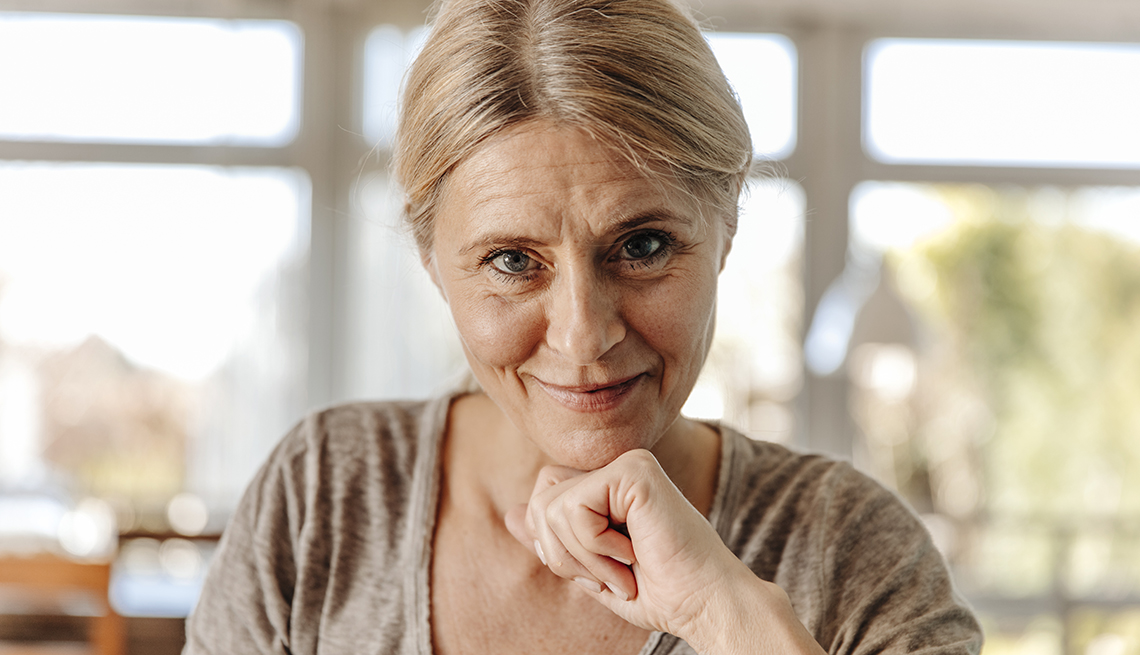
- Select a language for the TTS:
- UK English Female
- UK English Male
- US English Female
- US English Male
- Australian Female
- Australian Male
- Language selected: (auto detect) - EN
Play all audios:
Whether you’ve coasted for decades with a flawless complexion or bumped along with a breakout or two, most people find that at a certain age their skin demands some extra attention. Years
of sun exposure may bring discoloration. Your skin barrier, designed to latch onto moisture, weakens, causing dryness and irritation. Collagen begins to break down, leaving you with a
lackluster look. And what’s with those spots that seem to pop up overnight? If you’re not loving what you’re seeing in the mirror, read on for doctors’ best advice to make age spots, redness
and more history. ROSACEA WHAT IT IS. Basically, a less charming form of blushing. The main symptoms of this inflammatory skin disease are redness, broken blood vessels (which appear on the
cheeks and nose but can find their way to the forehead and chin) and, in some cases, acne-like bumps. It’s typically found in fair-skinned adults, usually women. In a survey conducted by
the National Rosacea Society, 39 percent of the participants said their rosacea first appeared after the age of 50. WHAT CAUSES IT. The exact cause is unknown though the condition tends to
run in families. “It’s also thought to be brought on by hyperactive blood vessels underneath the skin’s surface,” says Elizabeth Martin, a Birmingham, Alabama–based dermatologist. Another
possible cause: microscopic mites, called Demodex, that release bacteria into the skin when they die, which can lead to inflammation. “Everyone has these mites inside their skin,
particularly on the face, but people with rosacea can have an overconcentration,” says Martin. Studies show that people with rosacea may have more than 10 times the Demodex mites on their
skin as those without the condition. WHAT TO DO. Rosacea is a chronic condition and can’t be cured. But it _can_ be treated. Prescription topical medications, such as Mirvaso and Rhofade,
shrink blood vessels in the skin to diminish redness. You can do away with irritation, bumps and swelling by using an anti-inflammatory azelaic acid cream, like Azelex, or by taking an oral
antibiotic such as Metronidazole. Stubborn broken blood vessels, however, can't be effectively treated with topical or oral medications and usually require therapy with a VBeam laser,
pulses of light that penetrate the skin. It may take anywhere from one to eight treatments (for $400 to $800 apiece), depending on how serious the problem is. “People with rosacea often have
sensitive skin that requires daily washing with a mild cleanser,” says Martin. You'll also need to steer clear of triggers that can lead to flare-ups: hot and cold temperatures (“Try
working out in a cool environment whenever possible,” says Martin) and hot, spicy foods and alcohol. Stress can also cause the red to return. Also good to know: A study found that sunscreen
helps reduce the number of rosacea flare-ups. “Look for one with zinc oxide,” says Debra Jaliman, a New York City–based dermatologist. “It’s an ingredient used in diaper-rash-creams that’s
easy on the skin.” DRY SKIN WHAT IT IS. Skin that looks and feels dry, rough, tight, itchy and uncomfortable. At its most miserable, you might have red, flaky patches — particularly on your
elbows, lower arms and legs. WHAT CAUSES IT. Your risk of dry skin increases with age — in fact, more than 50 percent of adults age 40 and older deal with it. Our sebaceous glands pump out
less oil, while the skin’s barrier, which helps skin hold onto moisture, is more compromised. This leaves skin vulnerable to a laundry list of irritants, including dry and windy winter
weather, hot baths and showers (which can strip away the skin’s natural oil and play havoc with its moisture levels), along with harsh chemicals in soaps and detergents. Even certain
medications for blood pressure and cholesterol can be culprits. HOW TO HELP. Your best bet: Avoid triggers that leave skin parched in the first place. Take warm (not hot) baths and
showers. “Lather up with a mild fragrance-free soap or a cleansing cream, and soak for no more than 10 to15 minutes. After bathing, pat your skin dry — don’t rub — with a towel and
immediately after getting out of the bath, slather on a moisturizing cream,” says Martin. Avoid products with fragrance and switch to a fragrance-free detergent (or try double-rinsing your
clothes). Otherwise, wear a scarf, hat and gloves when you go out, and use a humidifier at night to help replenish moisture in the air lost to dry indoor heating. You can also help
moisturize from the inside by consuming plenty of essential omega-3 fatty acids (EFAs), which help boost hydration. Good sources include fatty fish (salmon, sardines, albacore tuna), seeds
(flaxseed, pumpkin and sunflower), avocado and walnuts. Also shoot for drinking around eight glasses of water daily, but know that you can satisfy some of your recommended daily allowance of
H2O with water-filled food, such as lettuce, strawberries or cucumbers.







